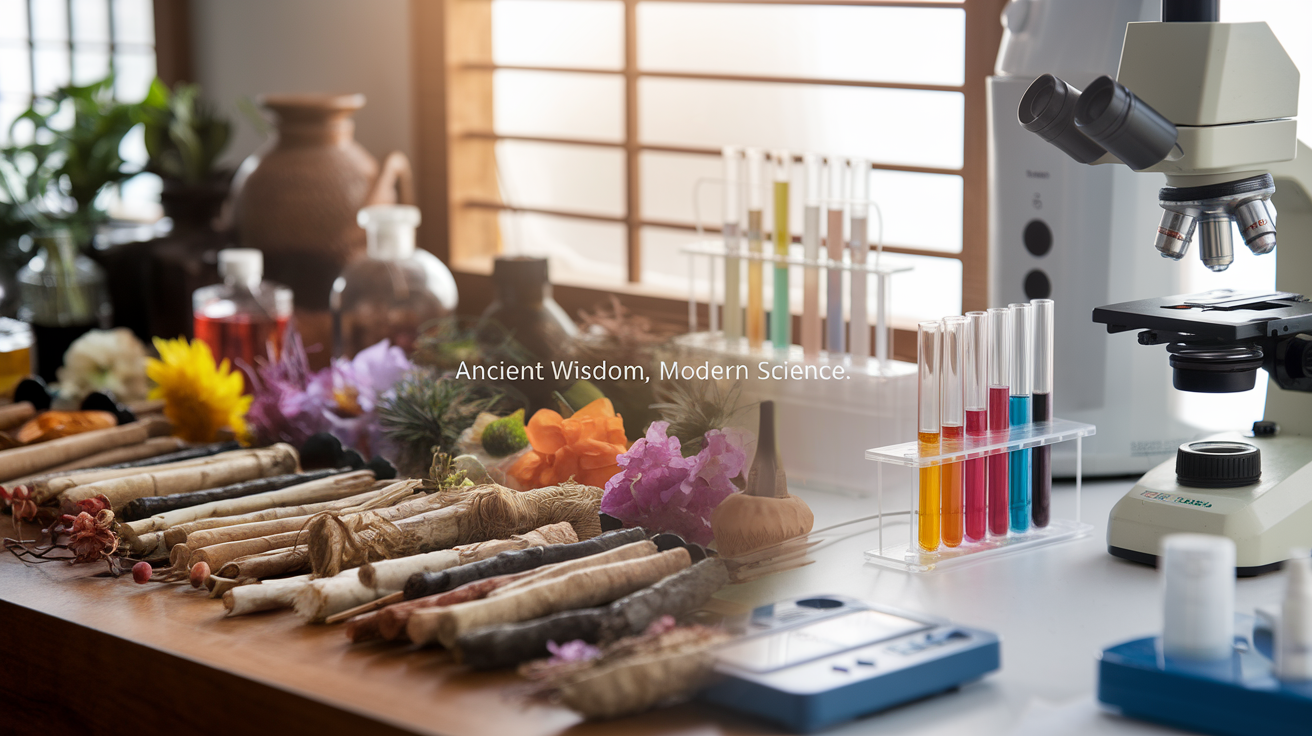
Did you know that the world's largest pharmaceutical companies now spend over $50 million annually researching traditional remedies most Western doctors once dismissed as "folk medicine"?
What if the next breakthrough skincare ingredient isn't created in a lab, but has been hiding in plain sight for centuries in indigenous healing traditions?
The growing interest in natural active ingredients from traditional and indigenous medicine isn't just a passing trend. It represents a fundamental shift in how we think about effective skincare formulation.
When ancient wisdom meets modern science, something magical happens. But here's what most brands get wrong when trying to harness these powerful botanical treasures...
The Rich Heritage of Traditional Medicine Systems
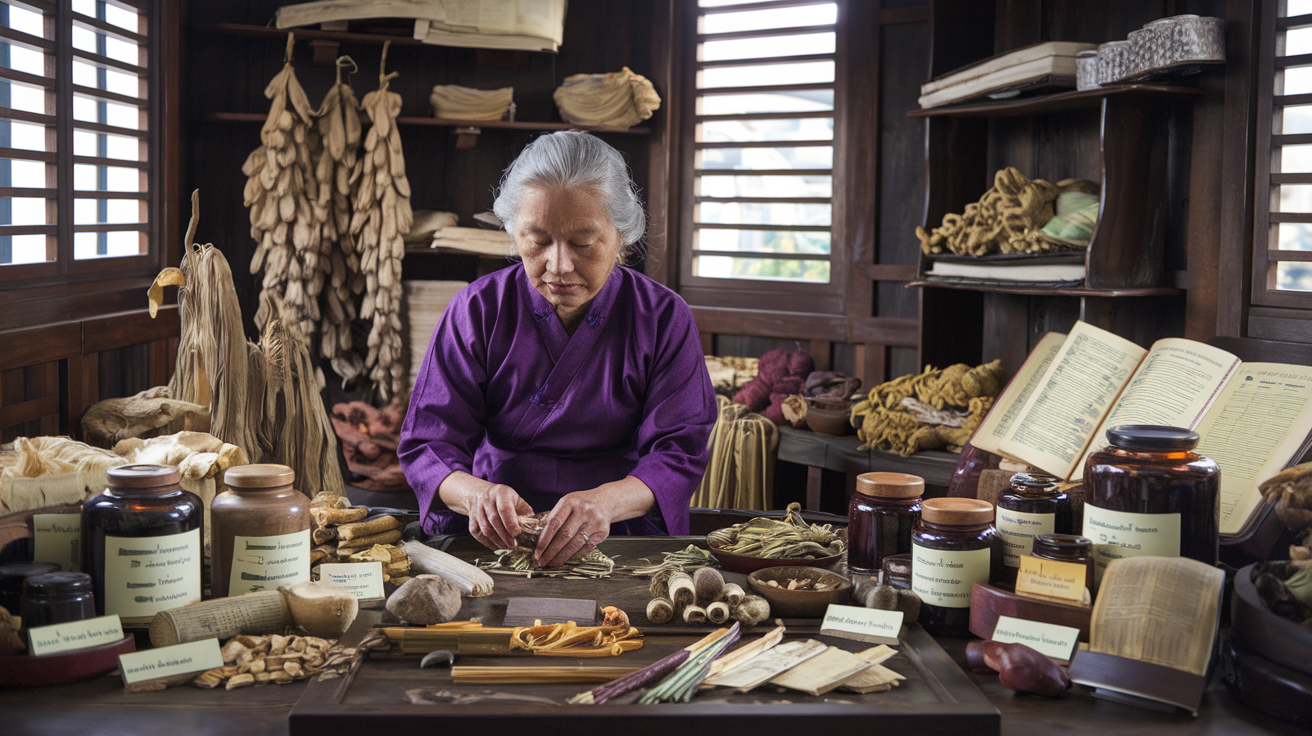
Ancient wisdom meets modern science
In the bustling labs of pharmaceutical giants, scientists are turning to something unexpected – recipes and remedies that are thousands of years old. It's not about throwing out clinical trials or abandoning modern methods. It's about recognizing that traditional healers weren't just mixing random herbs and hoping for the best.
They were onto something big.
These healers spent generations observing, testing, and refining their treatments. They passed down knowledge that actually worked – because if it didn't, people suffered. Talk about high stakes clinical trials!
Today's researchers are finding gold mines in these ancient pharmacopeias. Take artemisinin, the malaria treatment that saved millions of lives. Where did it come from? A 1,700-year-old Chinese medical text. Tu Youyou, the scientist who isolated it, won a Nobel Prize for her work – a beautiful marriage of ancient wisdom and modern science.
But this isn't just about finding "new" compounds. It's about understanding whole systems of healing that view the body, mind, and environment as interconnected. These traditional approaches often treat the person, not just the disease – something our symptom-focused medicine sometimes misses.
The numbers tell the story:
-
Over 25% of modern drugs directly trace back to traditional plant remedies
-
Roughly 80% of the world's population still relies primarily on traditional medicine
-
Traditional medicine knowledge encompasses more than 30,000 plant species globally
What makes this fusion of old and new so powerful is the complementary strengths. Modern science brings precision, standardization, and rigorous testing. Traditional knowledge brings holistic perspectives, time-tested observations, and compounds we might never have discovered through conventional research channels.
Global perspectives: Chinese, Ayurvedic, African, and Indigenous American traditions
Each traditional medicine system is like a different lens for viewing health and healing. They developed independently across continents, yet often reached surprisingly similar conclusions about wellness.
Traditional Chinese Medicine (TCM) isn't just about acupuncture and weird-sounding herbs. It's a comprehensive system built on balance – specifically between yin and yang energies and the five elements. TCM has given us game-changers like ephedra (the original source for ephedrine), ginseng, and the previously mentioned artemisinin.
What makes TCM unique is its detailed understanding of herb combinations and properties. Modern studies have confirmed that many classic TCM formulations have synergistic effects – where compounds work better together than individually. That's not luck. That's generations of careful observation.
Ayurvedic medicine from India predates even TCM, with roots going back 5,000+ years. Based on balancing three doshas (energy types), Ayurveda takes personalization to another level. A remedy that's perfect for one constitution might be useless for another.
Turmeric, ashwagandha, and holy basil (tulsi) are Ayurvedic staples now found in supplement aisles everywhere. But isolated compounds miss the Ayurvedic emphasis on proper preparation methods and combinations. The tradition includes complex processes like purification of metals and minerals through specific herbal treatments – techniques that modern chemistry is still working to understand fully.
African traditional medicine varies widely across the continent but shows incredible sophistication in plant knowledge. The West African plant Garcinia kola contains compounds effective against viruses, including potential activity against Ebola. The resurrection plant (Myrothamnus flabellifolia) from southern Africa contains powerful antioxidants that help it survive complete dehydration – properties now being explored for skin care and anti-aging products.
Despite being historically dismissed by colonial powers, African healing traditions preserved crucial knowledge about plants like the African devil's claw, now recognized for powerful anti-inflammatory properties.
Indigenous American traditions reflect deep ecological knowledge and sustainable harvesting practices. Plants like echinacea, black cohosh, and witch hazel – all standard in modern pharmacies – come from Native American medical knowledge.
What's particularly striking about Indigenous American traditions is their emphasis on gathering plants at specific times and with particular rituals – practices often dismissed as superstition until science confirmed that plant chemical compositions vary dramatically based on harvest timing, growing conditions, and handling methods.
These four traditions represent just a fraction of global healing wisdom. Each developed sophisticated understanding of their local ecosystems and medicinal resources, creating effective treatments long before double-blind studies or mass spectrometry.
Sustainable sourcing and ethical considerations
The rush to commercialize traditional ingredients has created a tangled web of problems.
Wild harvesting of popular medicinal plants has pushed some species like American ginseng and goldenseal to threatened status. When a plant suddenly becomes the next "superfood" or miracle ingredient, ecosystems can't keep up with demand. Just look at what happened with açaí berries when they hit the mainstream.
Then there's the elephant in the room: biopiracy. Too often, companies swoop in, patent traditional compounds or slightly modified versions, and profit enormously – while the communities who developed and preserved this knowledge for centuries receive nothing.
Take the case of turmeric. In 1995, two researchers at the University of Mississippi Medical Center received a U.S. patent for turmeric's wound-healing properties. The problem? This was common knowledge in India for thousands of years. The Indian government successfully challenged the patent, but only after spending significant resources fighting it.
Benefit-sharing isn't just nice – it's necessary. The United Nations' Nagoya Protocol establishes a framework for equitable sharing of benefits from genetic resources, but implementation remains spotty.
Some companies are getting it right. Ethical sourcing requires:
-
Fair compensation to source communities
-
Sustainable harvesting practices
-
Acknowledgment of traditional knowledge contributions
-
Investment in local capacity-building
-
Transparent supply chains
Cultivation offers one solution. By domesticating wild species, we can both preserve wild populations and ensure sustainable supplies. But it's not always straightforward – many plants produce different compound profiles under cultivation than in the wild.
Climate change adds another layer of urgency. Many traditional medicinal plants grow in specific environmental conditions now threatened by changing weather patterns. We risk losing both the plants and the knowledge about them if we don't act.
Indigenous communities themselves are often the best stewards of these resources. Projects that empower local experts to manage harvesting, cultivation, and conservation typically show the best outcomes for both ecosystems and economic development.
The deeper issue is philosophical: traditional medicine systems view plants as partners, not resources. Many include protocols for respectful harvesting – asking permission, taking only what's needed, and giving thanks. This relationship-centered approach to medicine stands in stark contrast to seeing plants merely as raw materials for active ingredients.
Moving forward, we need frameworks that honor both the science and the cultural context of these healing traditions. The most promising innovations will come not from extraction and exploitation, but from true collaboration between modern and traditional knowledge systems – with respect flowing in both directions.
Breakthrough Botanical Ingredients Transforming Skincare
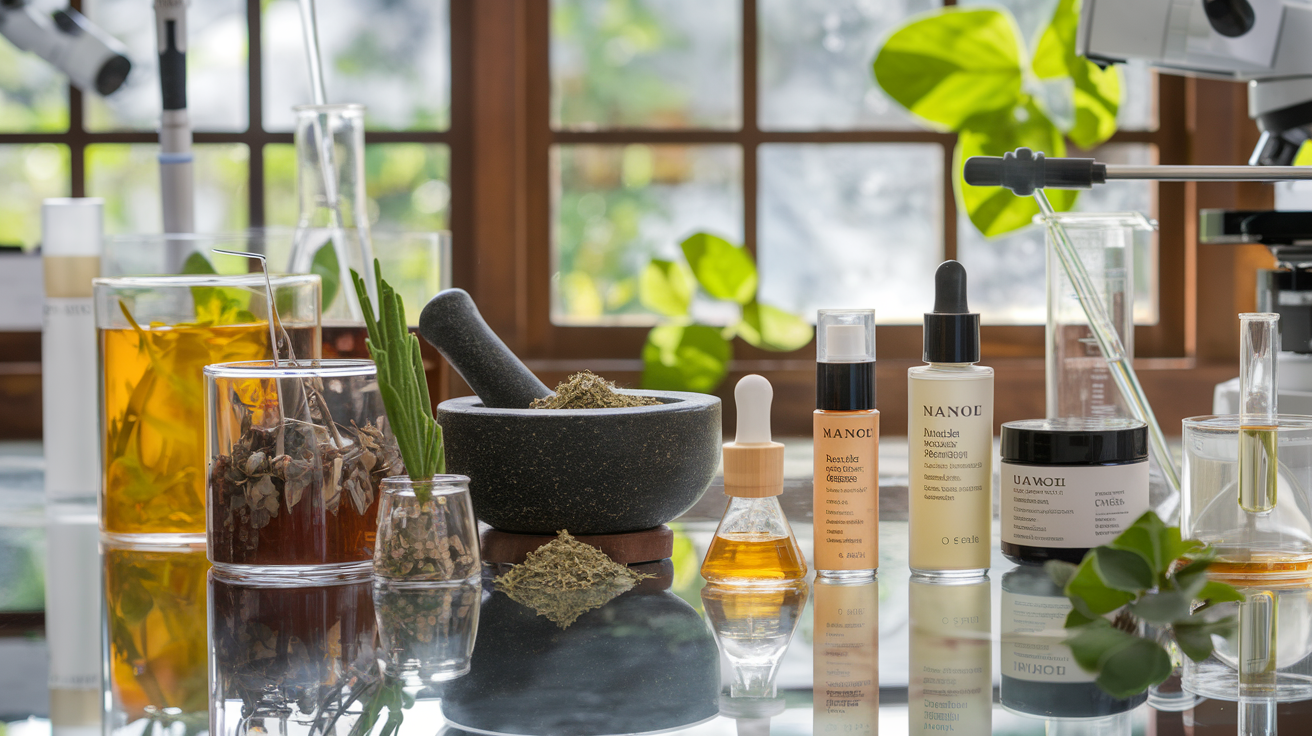
Adaptogens: Stress-fighting compounds from traditional remedies
You've probably noticed how skincare isn't just about looking good anymore – it's about feeling good too. That's where adaptogens come in, and they're changing everything.
Adaptogens are botanical ingredients that help your body resist physical, chemical, and biological stressors. They've been used for centuries in Ayurvedic and Traditional Chinese Medicine, but now they're making waves in modern skincare formulations.
Why? Because stress shows on your skin – fast. Stress triggers inflammation, accelerates aging, and worsens conditions like eczema, psoriasis, and acne. Adaptogens help your skin adapt to stress and recover its balance.
Some of the most powerful adaptogenic ingredients include:
Ashwagandha: This ancient Ayurvedic herb doesn't just calm your mind – it calms your skin too. Rich in withanolides, it reduces cortisol levels and fights inflammation. In skincare, it strengthens the skin barrier and reduces redness and irritation.
Holy Basil (Tulsi): Another Ayurvedic superstar that's packed with antioxidants and anti-inflammatory compounds. It helps detoxify the skin and protects against environmental stressors that cause premature aging.
Ginseng: A staple in Traditional Chinese Medicine for thousands of years, ginseng boosts circulation, brightens skin tone, and fights free radical damage. Its energizing properties help revitalize tired, dull skin.
Reishi Mushroom: Known as the "mushroom of immortality" in Asian healing traditions, reishi is rich in beta-glucans and triterpenes that soothe irritated skin and support its natural renewal process.
The magic of adaptogens lies in their two-way action – they can both calm and energize your skin, depending on what it needs. Think of them as skin normalizers, bringing balance where there's chaos.
Brands like Youth To The People, Dr. Andrew Weil for Origins, and Moon Juice have pioneered adaptogenic skincare lines that combine these traditional ingredients with cutting-edge delivery systems for maximum efficacy.
Indigenous Australian ingredients with powerful antioxidant properties
Aboriginal Australians have been using native plants for their medicinal and skincare benefits for over 60,000 years. Now, the global beauty industry is finally catching on to the incredible power of these botanical treasures.
Australian native ingredients are uniquely potent because they've evolved to thrive in one of the world's harshest environments. Extreme UV exposure, drought, and poor soil conditions have forced these plants to develop powerful protective compounds – and those same compounds work wonders for your skin.
Kakadu Plum takes center stage here. It contains the world's highest natural concentration of Vitamin C – up to 100 times more than oranges. This makes it an unmatched antioxidant that brightens skin tone, stimulates collagen production, and protects against environmental damage.
Quandong (native peach) is another antioxidant powerhouse. Rich in phenolic compounds, it fights free radicals while providing intense hydration. Its high vitamin E content also helps repair skin tissue and strengthen the barrier function.
Lilly Pilly contains flavonoids, vitamins, and minerals that firm the skin and reduce the appearance of fine lines. Traditional Aboriginal healers have long used it for its antiseptic and anti-inflammatory properties.
Desert Lime packs a serious punch of antioxidants, along with AHAs that gently exfoliate the skin and improve texture. It's particularly effective for oily and acne-prone skin types.
These ingredients aren't just effective – they're sustainable too. Many Australian skincare brands work directly with Indigenous communities, employing traditional harvesting techniques and ensuring fair compensation for their knowledge and resources.
Brands like Ere Perez, Sand & Sky, and Grown Alchemist have successfully incorporated these indigenous ingredients into products that honor their traditional uses while leveraging modern formulation techniques.
What makes these ingredients particularly exciting is that many of them are still being scientifically investigated, with new benefits being discovered regularly. The Australian botanicals market is expected to grow significantly in the coming years as more brands recognize their unmatched antioxidant potential.
Sacred plants from Amazonian healing traditions
The Amazon rainforest houses the world's largest collection of living plants and animals, including countless botanicals that indigenous communities have used for generations. These sacred plants are now revolutionizing the skincare industry with their unmatched benefits.
Camu Camu is a small Amazonian berry that, like Kakadu Plum, contains extremely high levels of vitamin C – about 60 times more than an orange. Beyond its antioxidant properties, it also contains amino acids and phytochemicals that brighten the complexion and fight hyperpigmentation.
Copaiba is extracted from the resin of the copaiba tree and has been used by indigenous healers to treat skin inflammation and wounds. Rich in sesquiterpenes, it's a powerful anti-inflammatory and antimicrobial ingredient, making it perfect for acne-prone and sensitive skin.
Andiroba Oil comes from the seeds of the Andiroba tree and has been used by Amazonian tribes for centuries to repel insects and heal skin. It contains limonoids, a group of compounds with anti-inflammatory and regenerative properties. Modern studies have confirmed its ability to improve wound healing and reduce scarring.
Maracuja (passion fruit) oil is pressed from the seeds of passion fruits growing wild in the Amazon. Indigenous women have long used it to maintain youthful skin. Rich in linoleic acid and vitamin C, it hydrates while regulating sebum production – perfect for combination skin types.
Buriti Oil, derived from the "tree of life" as many indigenous tribes call it, is one of the richest natural sources of beta-carotene. This translates to exceptional healing and rejuvenating properties for sun-damaged skin.
What makes these Amazonian ingredients particularly valuable is their connection to traditional knowledge. Many indigenous communities have developed sophisticated understanding of these plants' properties and extraction methods over thousands of years.
Ethical sourcing is crucial when it comes to Amazonian ingredients. The best skincare brands partner directly with indigenous communities, ensuring sustainable harvesting practices and fair compensation. Companies like Tata Harper, Costa Brazil, and Rahua have pioneered this approach.
The potential of Amazonian botanicals is still being uncovered, with ethnobotanists working alongside indigenous healers to document traditional uses and identify new compounds that could revolutionize skincare even further.
Traditional African botanicals with proven efficacy
African botanical ingredients have been used in traditional medicine and beauty rituals for centuries, passed down through generations of healers and beauty practitioners. Now, scientific research is validating what traditional knowledge has long known about these remarkable plants.
Marula Oil is perhaps the most famous African skincare ingredient today. Women in South Africa, Mozambique, and other regions have used this "miracle oil" to protect their skin and hair from the harsh climate. Extraordinarily rich in antioxidants and oleic acid, it absorbs quickly without clogging pores, making it suitable for all skin types. Clinical studies have shown it improves skin hydration and smoothness while reducing redness.
Baobab Oil comes from the seeds of Africa's iconic "Tree of Life." Traditional uses include treating skin dryness, burns, and eczema. Modern research confirms its exceptional omega fatty acid profile and vitamin content make it a powerful skin-fortifying ingredient. It's particularly effective for mature skin, helping to improve elasticity and reduce the appearance of fine lines.
Kigelia Africana (Sausage Tree) extract has been used throughout Africa for centuries to firm and tone the skin. Women in rural communities still harvest the fruit to create skincare preparations for face and breast firming. Recent studies have validated its ability to improve skin firmness and elasticity, making it increasingly popular in anti-aging formulations.
Rooibos isn't just for tea – this South African plant contains powerful flavonoids that protect against environmental damage and soothe sensitive skin. Traditional healers have long used it to treat dermatological issues, and modern research confirms its anti-inflammatory and antioxidant benefits.
Shea Butter from the nuts of the Karite tree has been a skincare staple in West Africa for thousands of years. Women have traditionally processed it by hand, using it to protect skin from the harsh Sahel climate. Rich in vitamins A, E, and F, it deeply moisturizes while delivering anti-inflammatory benefits. Clinical studies show it reduces transepidermal water loss and improves skin barrier function.
What makes these African botanicals particularly valuable is their sustainability potential. Many grow in arid regions with minimal water requirements, and their harvesting and processing have traditionally provided economic opportunities for women in rural communities.
Brands like 54 Thrones, Alaffia, and LXMI have built their formulations around these African botanicals, often establishing direct trade relationships with women's cooperatives that preserve traditional processing methods while ensuring fair compensation.
As African skincare ingredients gain global recognition, there's a growing focus on protecting indigenous knowledge and ensuring that communities who have preserved these traditions for generations benefit from their commercialization.
Ancient Remedies Validated by Modern Science
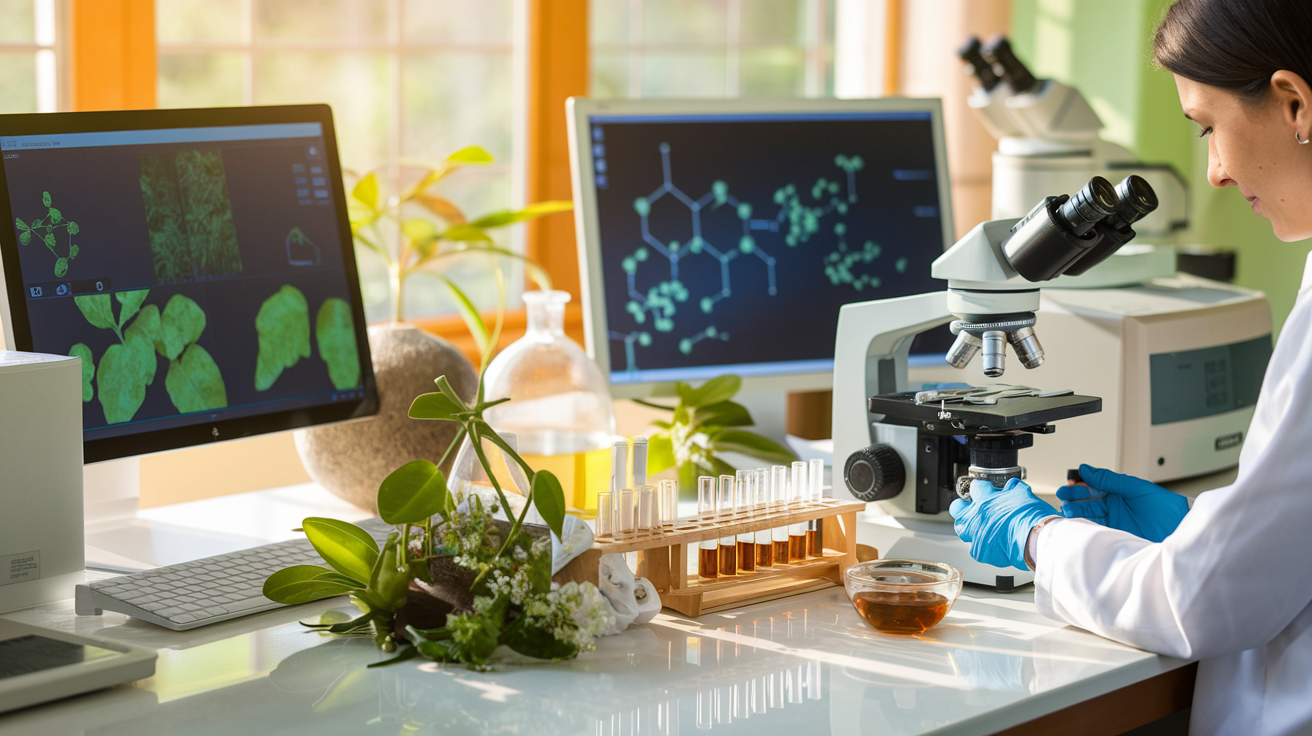
Clinical studies confirming traditional knowledge
Traditional medicine isn't just folklore or ancient wisdom passed down through generations. Modern science has finally caught up, validating what indigenous healers have known for centuries.
Take turmeric, for example. This vibrant yellow spice has been used in Ayurvedic medicine for over 4,000 years. Your grandmother might have recommended it for inflammation, and guess what? She was right. A 2019 review published in the Journal of Medicinal Chemistry analyzed over 120 clinical trials and confirmed curcumin (turmeric's active compound) significantly reduces inflammatory markers. These weren't small studies either – they included thousands of participants across different demographics.
What's fascinating is how specific these validations have become. Chinese herbal formula Huang-Lian-Jie-Du-Tang has been used for centuries to treat "heat and toxin accumulation." Sounds vague, right? But when researchers at the Shanghai Institute of Materia Medica tested it, they discovered it works through multiple signaling pathways to reduce neuroinflammation – something our sophisticated lab equipment only recently could confirm.
Here's a quick look at some traditional remedies that clinical studies have validated:
| Traditional Remedy | Cultural Origin | Traditional Use | Clinical Validation |
|---|---|---|---|
| Artemisia annua | Chinese | Malaria treatment | Nobel Prize-winning malaria drug artemisinin |
| Ashwagandha | Indian | Stress reduction | Significant cortisol reduction in randomized trials |
| Hoodia gordonii | San people (Africa) | Appetite suppressant | Confirmed P57 compound affects hypothalamic signals |
| Cat's claw | Amazon indigenous | Anti-inflammatory | Inhibits TNF-alpha production in immune cells |
| Devil's claw | Khoisan (Africa) | Pain relief | Effectiveness comparable to NSAIDs in arthritis studies |
What's remarkable is that clinical validation isn't just confirming efficacy – it's often showing these traditional remedies work through mechanisms we're only now beginning to understand. The 2017 Journal of Ethnopharmacology study on South African medicinal plants revealed that traditional healers had identified plants with antimicrobial properties long before we had microscopes to see bacteria.
Big pharma has noticed too. Approximately 25% of modern pharmaceuticals are derived directly from traditional plant remedies. Not just inspired by them – directly derived from compounds first identified by indigenous healers who couldn't see molecules but somehow knew they worked.
Bioactive compound identification and isolation techniques
Identifying what makes traditional medicines work isn't simple detective work. It's like finding a specific grain of sand on a beach. But scientists have developed increasingly sophisticated techniques to isolate these bioactive compounds.
High-performance liquid chromatography (HPLC) has revolutionized this process. Think of it as extremely precise filtering that can separate compounds by their molecular characteristics. When researchers applied HPLC to analyze Terminalia chebula (an Ayurvedic herb), they identified over 41 distinct compounds – each with potential therapeutic effects. Traditional healers couldn't name chebulinic acid or ellagitannins, but they knew which parts of the plant worked for specific ailments.
The bioassay-guided fractionation approach takes a different angle – it starts with testing plant extracts against specific targets (like cancer cells or bacteria), then progressively narrows down which fraction contains the active compounds. This method led to the discovery of taxol from Pacific yew tree bark, now a critical chemotherapy drug. Indigenous peoples of the Pacific Northwest had used yew preparations for various ailments for centuries.
Mass spectrometry has taken identification capabilities to another level. When researchers analyzed Vietnamese traditional medicine Hoang-Nan, mass spectrometry revealed alkaloids that directly affect neurotransmission – explaining its traditional use for neurological conditions.
Nuclear magnetic resonance (NMR) spectroscopy provides 3D structural information about molecules. This technique helped identify the exact structure of artemisinin from sweet wormwood, a traditional Chinese remedy for fevers. The compound's unusual peroxide bridge structure would have been impossible to predict without NMR technology.
What's truly mind-blowing is how these techniques are revealing multiple bioactive compounds working in synergy. Western medicine typically focuses on single-compound drugs, but traditional medicine often relies on complex mixtures. When researchers analyzed the traditional Kampo medicine Yokukansan, they didn't find one active compound – they found a network of compounds that work together on multiple neurotransmitter systems simultaneously.
The evolution of metabonomics and metabolomics has allowed us to track how these compounds are processed in the body. A 2020 study in Nature showed that traditional Chinese herbs prescribed for metabolic disorders actually modify gut microbiota composition, affecting how our bodies process nutrients – a mechanism traditional practitioners couldn't have described but somehow understood through observation.
Recent advances in artificial intelligence and machine learning are accelerating this process. Algorithms can now predict which compounds in a traditional remedy are most likely to be bioactive based on their chemical structures, saving years of laboratory work.
Traditional preparation methods that enhance potency
Ever wonder why traditional healers don't just chew raw herbs but instead create elaborate preparation methods? Turns out, they were onto something big.
Take decoction – the process of boiling plant materials to extract compounds. Seems simple, right? But studies from Seoul National University proved that decoction of certain Korean herbs increases bioavailability of active compounds by up to 470% compared to consuming the raw plant. The heat breaks down cell walls and transforms precursor compounds into their active forms.
The timing of harvest drastically affects potency too. Traditional Chinese medicine has strict guidelines about when certain plants should be harvested. Modern chromatography confirms these aren't arbitrary rules – the concentration of bioactive compounds in Angelica sinensis roots is highest exactly when traditional texts recommend harvesting them. The lunar cycles many indigenous practitioners follow for harvesting correlate with fluctuations in plant metabolite production.
Fermentation techniques used in traditional medicine were enhancing potency long before we understood microbiology. Korean traditional medicine uses fermented soybeans (Cheonggukjang) to treat inflammation. Research shows the fermentation process creates entirely new bioactive peptides not present in the original soybeans, increasing anti-inflammatory activity by over 200%.
Here's where it gets really interesting – combining certain plants dramatically changes their effects. Studies at the University of Washington showed that certain compounds in traditional Ayurvedic formulations are completely inactive alone but become highly bioavailable when combined with specific "potentiator" herbs that contain piperine or similar compounds. These potentiators can increase absorption by inhibiting enzymes that would normally break down the active compounds.
Aging preparations is another traditional technique with scientific backing. The Korean herbal preparation Beopje involves aging medicinal herbs with honey. Mass spectrometry analysis shows this aging process creates complex glycation end products with enhanced immunomodulatory effects not present in fresh preparations.
Even the material of preparation vessels matters. Traditional healers often insisted on specific materials for preparing medicines – clay pots, copper vessels, or particular types of wood. Research from the University of Barcelona confirmed that alkaline clay vessels actually catalyze conversion of certain inactive glycosides to active aglycones during the preparation of traditional Amazonian medicine ayahuasca.
The extraction medium – water, alcohol, oil – drastically affects which compounds are extracted. Traditional practitioners would select specific mediums for different conditions. Modern research confirms these choices were remarkably precise – fat-soluble compounds in plants like ginger are best extracted in oil preparations, while water extracts completely different compounds from the same plant.
The sequence of adding ingredients in multi-herb formulas can significantly alter the final composition. When researchers followed the precise traditional preparation order for the Chinese formula Sini Tang versus mixing all herbs simultaneously, they found distinctly different chemical profiles and therapeutic effects.
These traditional methods weren't just cultural practices – they were sophisticated pharmaceutical techniques developed through generations of careful observation, long before we had the scientific equipment to understand why they worked.
Commercialization and Product Development Challenges
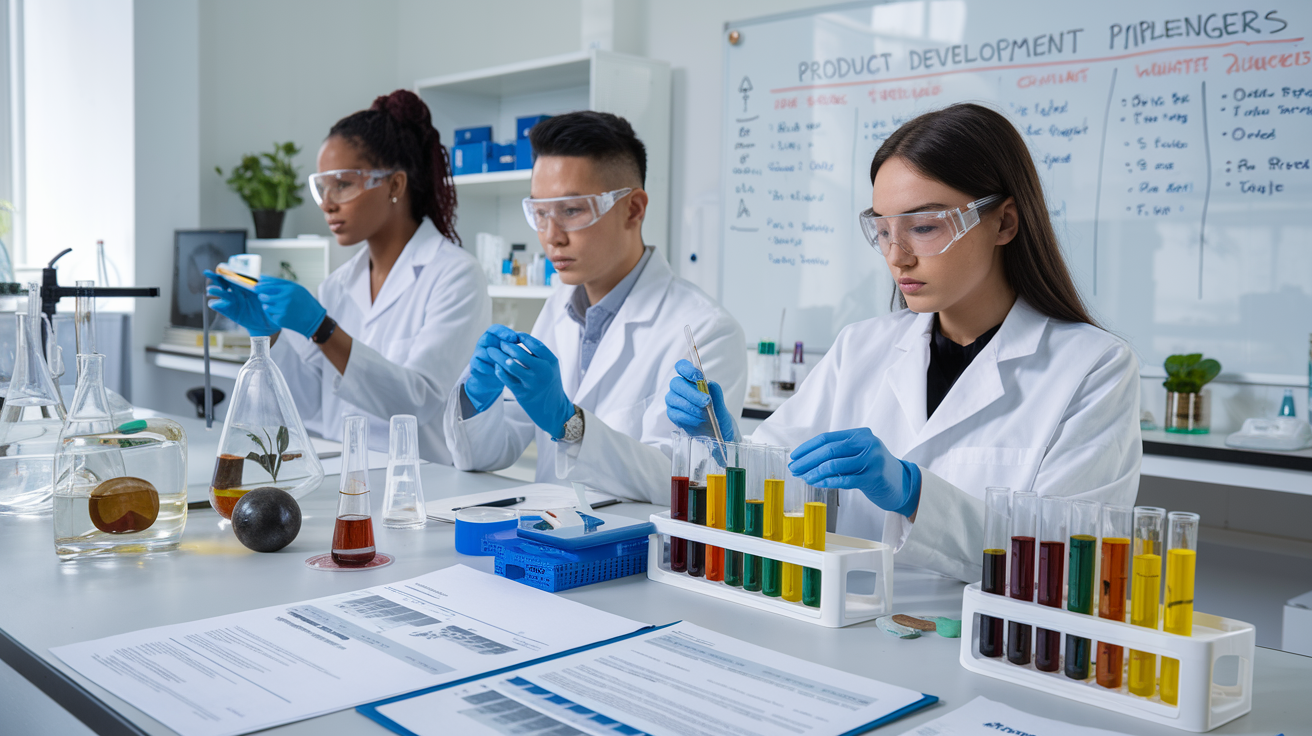
A. Intellectual property considerations and indigenous knowledge rights
The clash between modern patent systems and traditional knowledge isn't just a legal headache—it's a moral dilemma that companies developing natural ingredients can't ignore.
Traditional communities have safeguarded their medicinal knowledge for generations, only to watch outsiders patent what they've known for centuries. Talk about adding insult to injury.
Take the case of turmeric. Indian communities had used it medicinally for thousands of years when two American researchers patented its wound-healing properties in 1995. The Indian government fought back, providing ancient Sanskrit texts as evidence, and eventually won the patent cancellation. But not every community has the resources to fight these battles.
Biopiracy—the commercial development of biological compounds without compensating the indigenous communities who discovered them—remains rampant. The neem tree, ayahuasca, and rooibos tea have all been at the center of similar controversies.
Smart companies are now working with communities through benefit-sharing agreements. These arrangements ensure that when traditional knowledge leads to profitable products, the original knowledge holders receive compensation and recognition.
The Nagoya Protocol, part of the Convention on Biological Diversity, offers a framework for this approach. It requires companies to obtain prior informed consent from indigenous communities and establish mutually agreed terms for accessing and using traditional knowledge.
But here's the truth—these agreements aren't simple. They require ongoing dialogue, cultural sensitivity, and a genuine commitment to fairness.
B. Sustainable harvesting and fair trade practices
When a traditional ingredient becomes the next big thing in beauty or wellness, the pressure on natural resources can be intense.
Companies rushing to capitalize on trends often overlook the long-term consequences of overharvesting. Just look at what happened with sandalwood in India or wild American ginseng. Both faced near-extinction because of surging commercial demand.
Sustainable harvesting isn't just an environmental nicety—it's a business imperative. If you deplete your ingredient source, your entire product line collapses.
Smart companies implement several approaches:
-
Wild-crafting protocols: Strict guidelines for harvesting from natural environments that minimize ecological impact.
-
Cultivation programs: Investing in growing traditionally wild-harvested plants under controlled conditions.
-
Harvest timing: Collecting plant materials at optimal times to ensure regeneration.
-
Resource mapping: Tracking plant populations to prevent overharvesting.
Fair trade practices go hand-in-hand with sustainability. Workers harvesting ingredients deserve fair wages, safe conditions, and respect. Companies like Dr. Bronner's have shown that ethical sourcing isn't just possible—it's profitable.
Certifications like Fair Wild and Fair for Life help consumers identify products that meet ethical standards. But getting certified isn't cheap or easy, which can be a barrier for smaller companies.
The most forward-thinking brands partner directly with harvesting communities, investing in local infrastructure and education. These partnerships create resilient supply chains and positive brand stories that resonate with conscious consumers.
C. Formulation challenges with traditional ingredients
Creating stable, effective, and appealing products with traditional ingredients can feel like trying to solve a Rubik's cube blindfolded.
Natural ingredients are notoriously inconsistent. Plant compounds vary based on growing conditions, harvest time, and processing methods. A plant harvested from the same location in different seasons might have drastically different active compound concentrations.
This variability creates headaches for formulators trying to deliver consistent results. Modern consumers expect products that perform exactly the same way every time they use them.
Some common formulation challenges include:
| Challenge | Description | Common Solution |
|---|---|---|
| Stability | Natural compounds often break down when exposed to light, air, or heat | Specialized packaging, stabilizing agents, cold processing |
| Preservation | Traditional ingredients may be more prone to microbial contamination | Natural preservative systems, water activity control |
| Scent | Some traditional medicinals have strong, unpleasant odors | Masking agents, complementary essential oils, encapsulation |
| Color | Natural ingredients may create unpredictable or unappealing colors | Natural colorants, opaque packaging, education about natural appearance |
| Texture | Traditional ingredients can affect product feel and consistency | Innovative delivery systems, texture modifiers |
Extraction methods also significantly impact ingredient quality. Cold pressing preserves heat-sensitive compounds but yields less extract. Solvent extraction increases yield but may leave residues. Supercritical CO2 extraction offers a clean alternative but requires expensive specialized equipment.
To overcome these challenges, many companies are investing in advanced technologies like microencapsulation, which protects sensitive compounds, or liposomal delivery, which improves bioavailability.
The most successful formulations balance tradition with innovation, honoring ancestral wisdom while leveraging modern science to solve practical problems.
D. Regulatory hurdles and standardization issues
Navigating the regulatory landscape for traditional ingredients feels like walking through a maze that keeps changing. Different countries have wildly different approaches, and what's perfectly legal in one market might be prohibited in another.
The FDA in the United States, for instance, hasn't established clear guidance for many traditional ingredients. Products containing these ingredients often fall into regulatory gray areas between cosmetics, drugs, and supplements. Make a claim that's too specific about benefits, and suddenly your face cream might be classified as an unapproved drug.
In the EU, the Novel Foods Regulation requires safety assessments for ingredients without a significant history of consumption before May 1997. This creates barriers for traditional ingredients from non-European cultures, regardless of their centuries of use elsewhere.
Standardization presents another massive challenge. How do you standardize complex botanical extracts containing hundreds of compounds when science hasn't identified which ones are responsible for the beneficial effects?
Some companies standardize to marker compounds—specific molecules that can be measured consistently. But this approach has limitations. The marker compound might not be the active ingredient, and focusing on a single component ignores the synergistic effects of the plant's complex chemistry.
Modern analytical techniques like high-performance liquid chromatography (HPLC) and mass spectrometry help create fingerprints of traditional ingredients, but they're expensive and require specialized expertise.
Safety testing adds another layer of complexity. Traditional use provides some evidence of safety, but modern regulatory bodies often require additional testing. This testing can be prohibitively expensive for small producers, especially when multiple ingredients are involved.
E. Consumer education about traditional ingredient benefits
The gap between traditional knowledge and consumer understanding remains vast. Most people shopping for beauty and wellness products have no idea about the rich cultural contexts behind traditional ingredients.
This knowledge gap creates both a challenge and an opportunity. Companies need to educate consumers without oversimplifying or appropriating cultural practices.
Effective consumer education strategies include:
-
Storytelling: Sharing the cultural significance and historical use of ingredients
-
Transparency: Clearly explaining sourcing practices and benefit-sharing arrangements
-
Science translation: Making complex research accessible without oversimplification
-
Digital content: Using websites and social media to share deeper information than packaging allows
-
Community building: Creating spaces for knowledge sharing among interested consumers
The most successful brands strike a balance between scientific evidence and traditional wisdom. They respect the cultural origins of ingredients while providing the validation modern consumers seek.
Glossary cards, QR codes linking to detailed information, and educational insert materials help brands share complex information without cluttering packaging.
Social media offers powerful platforms for consumer education. Short videos demonstrating traditional preparation methods or explaining sustainable harvesting practices can generate engagement while building appreciation for the depth of knowledge behind traditional ingredients.
The education process must be ongoing. As research evolves and new findings emerge, consumers need updates about understanding of traditional ingredients. This continuous dialogue builds trust and positions brands as authentic authorities.
Case Studies: Success Stories in Traditional-Modern Integration
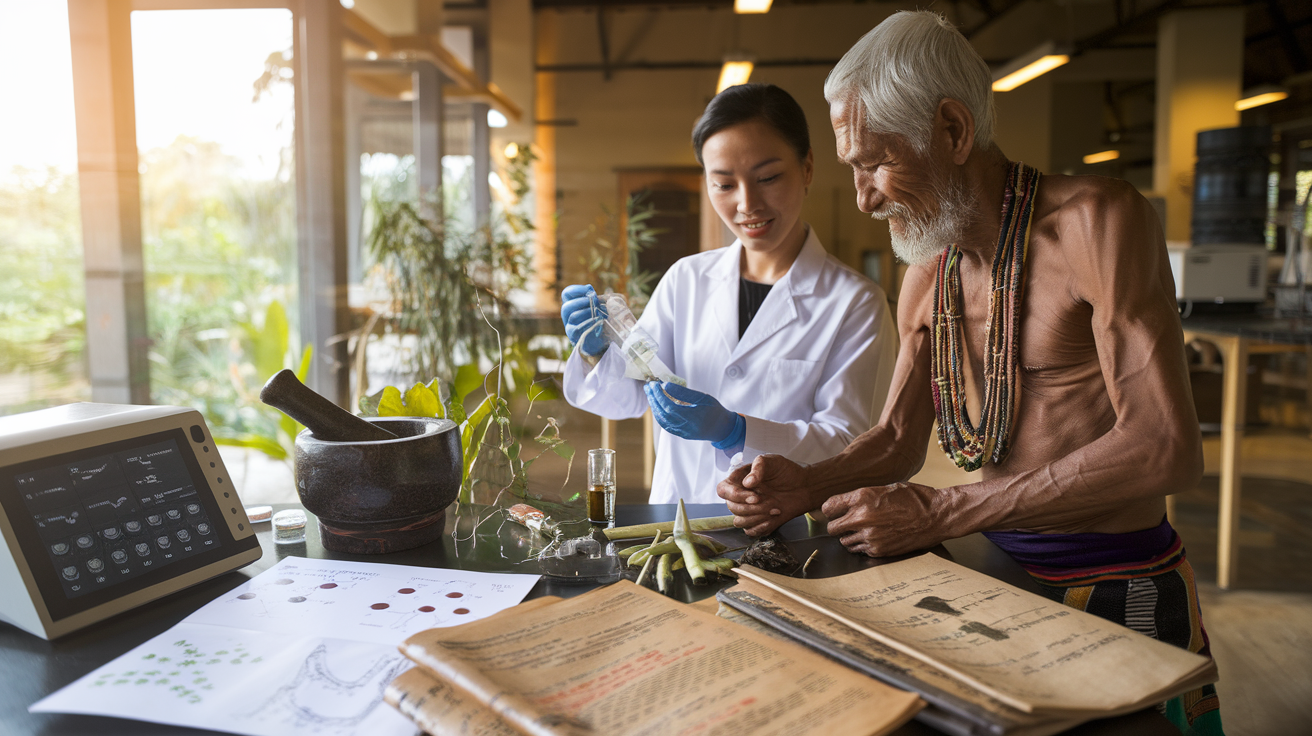
Breakthrough skincare formulations with indigenous ingredients
Ever walked down the skincare aisle feeling overwhelmed by fancy packaging and scientific-sounding ingredients? While modern skincare brands battle for attention, some of the most effective solutions come from traditional knowledge that's been hiding in plain sight for centuries.
Take Thanaka, a pale yellow paste made from ground bark that Burmese women have used for over 2,000 years. This isn't just some ancient beauty ritual that stuck around—it works. When beauty giant Shiseido noticed its potential, they didn't just borrow the idea; they partnered with local communities to develop their Thanaka Radiance line. The result? Products that harness Thanaka's natural sun protection and brightening properties while ensuring sustainable sourcing and fair compensation for indigenous knowledge.
What makes this partnership tick is how it respects both worlds. Local communities maintain control over their traditional resource while gaining economic benefits. Shiseido gets a unique, effective ingredient with a compelling story. And consumers? They get products that actually deliver results.
The numbers back this up too:
| Ingredient | Traditional Use | Modern Application | Key Benefits |
|---|---|---|---|
| Thanaka (Myanmar) | Sun protection, acne treatment | Facial moisturizers, sunscreens | UV protection, anti-inflammatory, brightening |
| Kigelia (East Africa) | Skin firming, healing | Anti-aging serums, breast firming creams | Firming, toning, antioxidant protection |
| Murumuru Butter (Amazon) | Skin and hair moisturizer | Lip balms, body butters, conditioners | Deep hydration, restores elasticity |
But it goes beyond Thanaka. Remember when argan oil suddenly appeared in every hair product? That's another success story. Women in Morocco have processed argan nuts into oil for generations. When companies like Moroccanoil recognized its potential, they created a global phenomenon while establishing cooperative systems that primarily employ Berber women, tripling household incomes in some regions.
The key difference between these examples and failed attempts? Respect. The brands that succeed don't just extract and exploit—they build relationships, acknowledge sources, and ensure benefits flow back to communities.
African botanicals are making similar waves. Kigelia africana, used for centuries across East Africa for its firming properties, now stars in premium skincare lines targeting sagging skin. Clinical studies confirm what traditional knowledge always knew—it works exceptionally well for improving skin elasticity.
Traditional Chinese Medicine compounds in modern pharmaceuticals
The story of artemisinin might be the most dramatic medicine-meets-tradition tale of our time. When malaria parasites developed resistance to standard treatments in the 1960s, researchers were desperate for alternatives. The breakthrough came not from a high-tech lab but from ancient Chinese medical texts.
Tu Youyou, a Chinese pharmaceutical chemist, dug through traditional recipes and found references to sweet wormwood (Artemisia annua) for treating fevers. After extracting artemisinin from this herb, she discovered it killed malaria parasites with remarkable efficiency. This work eventually earned her the 2015 Nobel Prize in Medicine and saved millions of lives worldwide.
What's fascinating is how the development process blended traditional knowledge with modern science:
-
Traditional texts identified the plant and basic preparation methods
-
Modern extraction techniques isolated the active compound
-
Pharmaceutical companies developed synthetic derivatives for mass production
-
Clinical trials validated efficacy using scientific standards
This isn't just a one-off success. Major pharmaceutical companies now routinely screen Traditional Chinese Medicine (TCM) compounds for potential applications:
| TCM Compound | Traditional Use | Modern Drug | Condition Treated |
|---|---|---|---|
| Artemisinin (Qinghaosu) | Fever treatment | Artesunate, Artemether | Malaria |
| Huperzine A | Memory enhancement | Alzheimer's treatment (Phase II trials) | Cognitive decline |
| Triptolide | Anti-inflammatory | Minnelide (clinical trials) | Pancreatic cancer |
| Berberine | Digestive disorders | Various supplements | Type 2 diabetes, high cholesterol |
Pharmaceutical giant Novartis took this approach with their antimalarial Coartem, based on artemisinin. Rather than simply extracting the compound, they developed a synthetic derivative and established sustainable cultivation practices with Chinese farmers. Annual production now exceeds 100 million treatments.
The process isn't always smooth sailing. The biggest challenges include standardizing natural compounds, addressing intellectual property questions, and ensuring benefits reach traditional knowledge holders. Companies like Hutchison China MediTech have pioneered models where traditional practitioners collaborate with scientists throughout development.
This integration is gaining momentum as drug discovery costs skyrocket. Traditional medicine essentially offers pre-screened compounds with centuries of human use data. Smart pharmaceutical companies recognize this represents billions in potential research shortcuts.
Ayurvedic herbs revolutionizing wellness supplements
The supplement industry has absolutely exploded with Ayurvedic ingredients over the past decade. But this isn't just clever marketing—clinical research increasingly validates what Ayurvedic practitioners have claimed for thousands of years.
Turmeric leads the charge. Its active compound curcumin was a staple in Ayurvedic medicine long before it became a wellness sensation. When supplement company Gaia Herbs launched their turmeric products, they didn't just import cheap powder; they developed a patented extraction process that dramatically increases bioavailability while maintaining traditional formulation principles like combining with black pepper.
Their approach worked brilliantly. Sales jumped 23% annually for five years straight, and clinical studies confirmed their products delivered higher levels of active compounds to the bloodstream.
The success stories go well beyond turmeric:
| Ayurvedic Herb | Traditional Use | Modern Application | Research-Backed Benefits |
|---|---|---|---|
| Ashwagandha | Stress relief, vitality | Adaptogenic supplements | Reduced cortisol levels, improved sleep quality |
| Bacopa Monnieri | Cognitive enhancement | Nootropic formulations | Improved memory formation, reduced anxiety |
| Boswellia | Joint health | Anti-inflammatory supplements | Reduced osteoarthritis pain, improved mobility |
| Amla (Indian Gooseberry) | Immunity, longevity | Antioxidant complexes | Highest natural vitamin C content, cellular protection |
Himalaya Herbal Healthcare exemplifies successful integration of traditional wisdom with modern science. Founded in 1930, they've grown into a global brand by maintaining rigorous clinical validation while honoring Ayurvedic principles. Their liver support supplement LiverCare (Liv.52) has over 50 published clinical studies backing its efficacy—something few conventional supplements can claim.
What separates market-leading products from mediocre ones is commitment to authenticity. The supplement industry is notoriously under-regulated, leading to many products with minimal active ingredients or incorrect species. Companies like Banyan Botanicals and Organic India have built loyal customer bases by emphasizing sustainability, appropriate harvesting techniques, and maintaining traditional preparation methods.
This isn't just good ethics—it's good business. When Consumer Labs tested various ashwagandha supplements, products using traditional extraction methods contained significantly higher levels of active withanolides than those using modern shortcuts.
The wellness boom shows no signs of slowing, with Ayurvedic supplement sales projected to reach $14.9 billion by 2026. As research continues confirming benefits of traditional formulations, we'll likely see even more sophisticated products that honor traditional knowledge while meeting modern scientific standards.
The common thread across these success stories? Respecting traditional knowledge as the sophisticated, complex systems they truly are—not primitive practices to be "improved" but valuable intellectual frameworks worth preserving while carefully integrating with modern methods.

The fusion of ancient medicinal practices with modern scientific validation represents a powerful evolution in skincare and wellness. Traditional and indigenous medicine has given us remarkable ingredients like turmeric, ashwagandha, and ginseng that are now backed by clinical studies confirming their anti-inflammatory, antioxidant, and skin-rejuvenating properties. As these botanical treasures gain recognition in mainstream formulations, they bridge centuries of healing wisdom with contemporary innovation.
Embracing these traditional ingredients offers more than just effective skincare—it honors indigenous knowledge while creating sustainability opportunities for local communities. As consumers increasingly seek authentic, ethically-sourced products with proven benefits, brands that thoughtfully integrate these traditional ingredients stand to connect meaningfully with conscious consumers. The future of skincare lies in this respectful partnership between ancestral wisdom and scientific advancement.
📚 References
- Aggarwal BB et al., 2007 – Curcumin: the Indian solid gold (Turmeric’s active compound with anti-inflammatory properties)
- Singh N et al., 2011 – Withania somnifera (Ashwagandha): traditional use and modern research review
- Stough C et al., 2008 – Bacopa monnieri (Brahmi): cognitive-enhancing effects in healthy humans
- Cohen MM, 2014 – Tulsi (Holy Basil): adaptogenic and therapeutic applications in modern medicine
- Zheng W & Wang SY, 2001 – Antioxidant activity of phenolic compounds in medicinal plants
- Balick MJ & Cox PA, 1996 – Plants, People, and Culture: The Science of Ethnobotany (Indigenous medicine and bioactive discovery)
- World Health Organization (WHO), 2019 – WHO Global Report on Traditional and Complementary Medicine
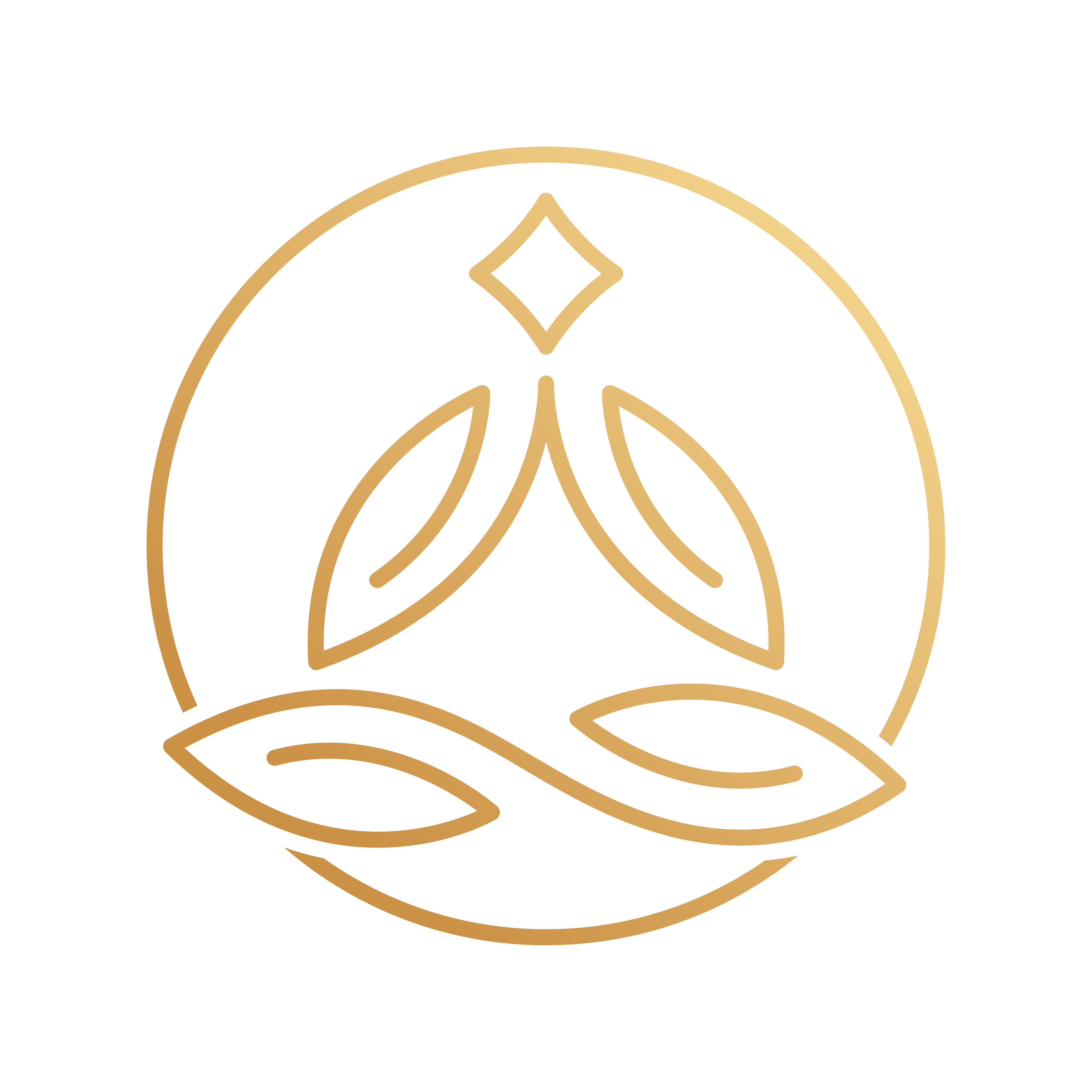

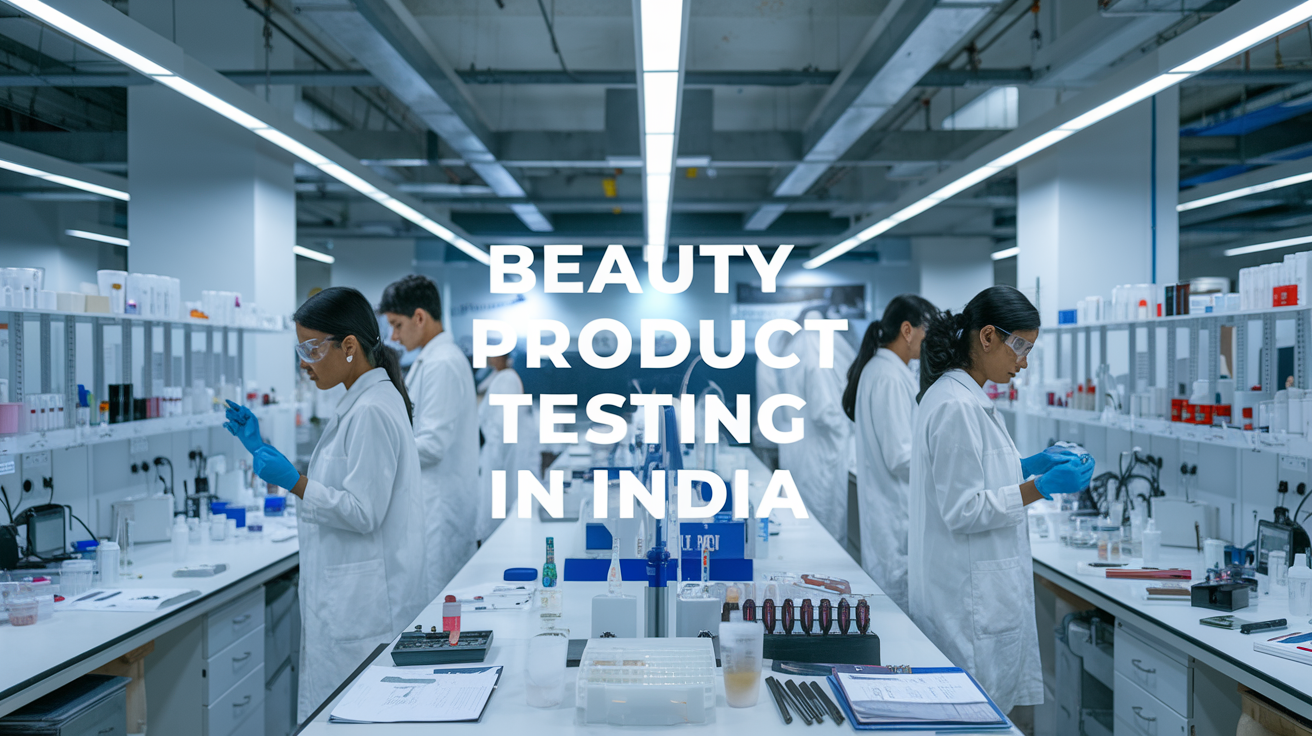

Leave a comment
This site is protected by hCaptcha and the hCaptcha Privacy Policy and Terms of Service apply.